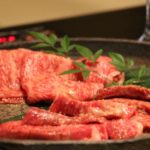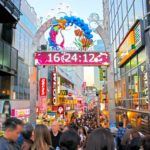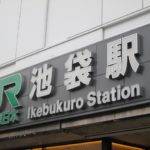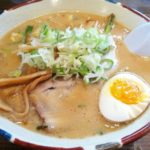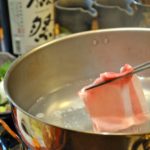10月 8, 2017
Top 10 Tourist Attractions & Best Things to Do in Ginza, Tokyo
- 3,452view
In Ginza there are many fashion brand shops and restaurants making it the perfect place to enjoy shopping and a good meal or two or three. There is actually a special word used for walking about Ginza. In addition, many more remote towns will call their shopping center the “Ginza of 〇〇” and it has become a sort of brand. Today we will introduce some special sites of Ginza. Let’s get to know the non-shopping side of Ginza.
1. The Stone Monument of the Origin of Ginza
photo by toyo4580 / embedded from Instagram
This is a small slab of rock in front of the Tiffany shop on Ginza Chuo Dori and Ginza 2chome. The origin of name “Ginza” is said to be in the production and administration of silver (gin) that occurred here. This slab marks the location of the facilities that did this.
Places that manage gold are known as “Kinza”, kin meaning gold. It is said that the name of the area change from Shinryogae-machi (exchange town) to “Ginza” when silver became more prominent. This slab of rock is not so big so if you are not careful you will miss it. However, please do visit and remember the origins of this shopping district.
Name: The Stone Monument of the Origin of Ginza
Address: 2-7 Ginza Chuo-ku Tokyo Prefecture
Access 1): 3 minutes from JR Ginza Station
Access 2): 1 minutes from Chikatetsu Ichome Station
Map: Map to he Stone Monument of the Origin of Ginza
2. Ginza Brick Stone and Gas Lamp
photo by maxatchan / embedded from Instagram
When you go alone Ginza Chuo Dori in the direction of Kyobashi you will find a memorial of bricks and a gas lamp post under the highway. This is the older memorial of a fire that occurred in Ginza during the Meiji-period. After this fire many of the buildings in Ginza were rebuilt in brick that would be more fire resistant.
There were 85 gas lamps but they collapsed during the Kanto Earthquake. This memorial was made after the bricks were found in excavation. The brick is of the French-type and will remind you of what Ginza looked like during the Meiji-period.
Name: Ginza Brick Stone and Gas Lamp
Address: 1-11-2 Ginza Chuo-ku Tokyo Prefecture
Access 1): 3 minutes from Ginza Ichome Station
Access 2): 2 minutes from Takaracho Station
Access 3): 3 minutes from Kyobashi Station
Map: Map to Ginza Brick Stone and Gas Lamp
3. Shibaguchi Gomonseki
photo by mademoiselle_kokeshi / embedded from Instagram
Shiodome River ran under where you will currently find a highway. A special bridge was made for the representatives from Korea and Shibabuchi Gomon was the gate nearest to this bride. The place this was located is marked as a historical site.
Shibaguchi Gomon would later become the entry way to Ginza Chuo Dori (street). After it was burned down in the fire it was not rebuilt but Shinbashi continued to serve as an entryway to the area till 1964. Now there is no bridge due to the river being filled in but the “Shibaguchi Gomonseki” remains as a monument to the bridge and gate.
Name: Shibaguchi Gomonseki
Address: 8-10-8 Ginza Chuo-ku Tokyo Prefecture
Access: 7 minutes from JR Shinbashi Station
Map: Map to Shibaguchi Gomonseki
4. Kyobashi Memorial
Kyobashi (Kyo-bridge) was built during the Edo-period and was a popular bridge alongside Nihonbashi. It was remodeled in 1922 but then taken away with the filling in of the river in 1959.
Three of the pillars remain on Ginza Ichome and Kyobashi Sanchome. These now serve as historic memorials of the area and as objects used to study the architecture of the era. You can find a history on a memorial slab here so come by and learn the history of the area.
Name: Kyobashi Memorial
Address: 1chome 2-4 Ginza Chuo-ku Tokyo Prefecture
Access: 3 minutes from JR Shinkyobashi Station
Map: Map to Kyobashi Memorial
5. Shiseido Parlour Ginza Main Shop
photo by nana_tanida_ / embedded from Instagram
This was the first parlor to sell ice-cream and soda in Japan. Here they are very particular to the dishes used and the process used in preparing the food. All the dishes and machines used are from American-made.
This attitude has taken notice from the community and enjoying ice-cream here has become a must for walking and enjoying Ginza. This parlor opened as a restaurant in 1928 and sells traditionally more western dishes such as chicken-rice or omelet-rice that will remind you of the time period in which the restaurant just opened.
Name: Shiseido Parlour Ginza Main Shop
Address: 8-8-3 Ginza Chuoku Tokyo Prefecture
TEL: +81-3-5537-6241
Hours: 11:30~21:30
Closed Mondays
Access 1): 7 min Ginza Station
Access 2): 5min Shinbashi Station
Website: https://parlour.shiseido.co.jp/
Map: Map to Shiseido Parlour Ginza Main Shop
6. Ginza Yanagi no Ishibumi
photo by ginza.shintaro / embedded from Instagram
Ginza had many cherry blossoms, maples and pines. However, due to the large amount of water, root rot age was a problem. Willows were chosen due to their strong resistance against root rot. The sound of the breeze in the branches of the willow trees was a special atmosphere that is still requested to be fully revived. Most trees have been replaced with Ginko trees but along Ginza Yanagi Dori the willows remain.
“Ginza Yanagi no Ishibumi” is a stone slab remembering the willows of Ginza with the lyrics of Yaso Saijo titled “Willows of Yangi”. When you visit Ginza, be sure to visit this historical monument.
Name: Ginza Yanagi no Ishibumi
Address: 8-9 Ginza Chuo-ku Tokyo Prefecture
Access: 3 minutes from JR Shinbashi Station
Map: Map to Ginza Yanagi no Ishibumi
7. Tokyo Takarazuka Kagekijyo
photo by yoko_0417 / embedded from Instagram
Takarazuka is a theater in which both the male actors and the female actors are played by yet married younger women. “Tokyo Takarazuka Kagekijyo” is where this group performs in Tokyo. Hyogo Prefecture is the home of this theater.
The motto of this theater to create performances that men and women, young and old can enjoy. In 1913 the Takarazuka chorus began and opened their 1st performance in 1914. This was the group later to become the Takarazuka Kagekidan. In 1919 the “Takarazuka Ongaku Kageki” school opened and continues to raise up future stars to this day. Takarazuka Gekijyo is the show started by the graduates of this school. This is a show worth seeing!
Name: Tokyo Takarazuka Gekijyo
Address: 1‐1‐3 Yurakucho CHiyodaku Tokyo Prefecture
TEL: +81-3-5251-2001
Hours: 10:00~18:00
Closed Mondays
Access 1): 5 min Yurakucho Station
Access 2): 1 min Hibiya Station
Website: http://kageki.hankyu.co.jp/
Map: Map to Tokyo Takarazuka Gekijyo
8. Shinbashi Enbujo
photo by rantaka32623 / embedded from Instagram
This stage was built in 1925 to raise the skill of the Geisha in Shinbashi. Here there are Higashi Odori performances by the Shinbashi Gesha in the spring and fall. Especially the spring performance reminds one of the natural scenery of Tokyo and it is very popular.
Higashi Odori is the combination of the song and dance of the Shinbashi Geisha with Kappo Cuisine and has become a strong part of Japanese history. Since 1940 this stage has been used for many other types of traditional and modern performances.
Name: Shinbashi Enbujo
Address: 18-2 6chome Ginza Chuoku Tokyo Prefecture
TEL: 03-3541-2600
Access 1): 5 min Higashiginza Station
Access 2): 3 min Kikuchi Shijyo Station
Website: http://www.shinbashi-enbujo.co.jp/
Map: Map to Shinbashi Enbujo
9. Godzilla Statue
photo by unlucky0709 / embedded from Instagram
Across from the Tokyo Takarazuka Gekijo is the landmark, Hibiya Cnater where you can find the handprints of many Toho movie actors. Here you will also find a statue of the Japanese screen hero, “Godzilla”.
Godzilla is popular with children and adults alike. This statue was put into place for the 40 year anniversary of the original Godzilla. The foot of the statue states “Not likely the last one…”. This 70 m statue is said to be 1 100th of the original size of Godzilla. Come visit Godzilla while in Ginza.
Name: Godzilla Statue
Address: 1-2-2 Yurakucho Chiyodaku Tokyo Prefecture
Access1): 3 minutes from Yurakuchi Station
Access 2): 1 minutes from Hibiya Station
Map: Map to Godzilla Statue
10. Kimuraya Souhonten Ginza Main Shop
photo by deliciousdeliciousimnormal / embedded from Instagram
Sweet bean-paste in a round bun is a traditional bread of Japan known by any Japanese. This kind of role originated in 1874 and was first created by the creators of this Kimuraya bread shop.
Now it is common to see black sesame seed sprinkled on top of the buns. However, originally the buns had salted cherry blossom petals on top. Most bread is made with baker’s yeast. However, the yeast used by Kimuraya is much more like that used in pastries.
The building that houses this bakery is a Japanese and Western-style building like those found commonly in the Meiji-era. This is a bakery you will have to visit for yourself.
Name: Kimuraya Sohonten Ginza Ginza Main Shop
Address: 4-5-7 Ginza Chuoku Tokyo Prefecture
TEL: +81-3-3561-0091
Hours: 10:00~21:00
Access 1): 6 min Yurakucho Station
Access 2): 5 min Ginza Ichome Station
Website: https://www.kimuraya-sohonten.co.jp/
Map: Map to Kimuraya Sohonten Ginza Ginza Main Shop
Enjoy the tourist attractions in Ginza!
Ginza is certainly best known for shopping but it has more to offer! This is a town with history from the Edo-period and Meiji-period and it is packed with traditional culture. When you come to Tokyo be sure to walk around Ginza and find new side of Japan you did not know of before.










